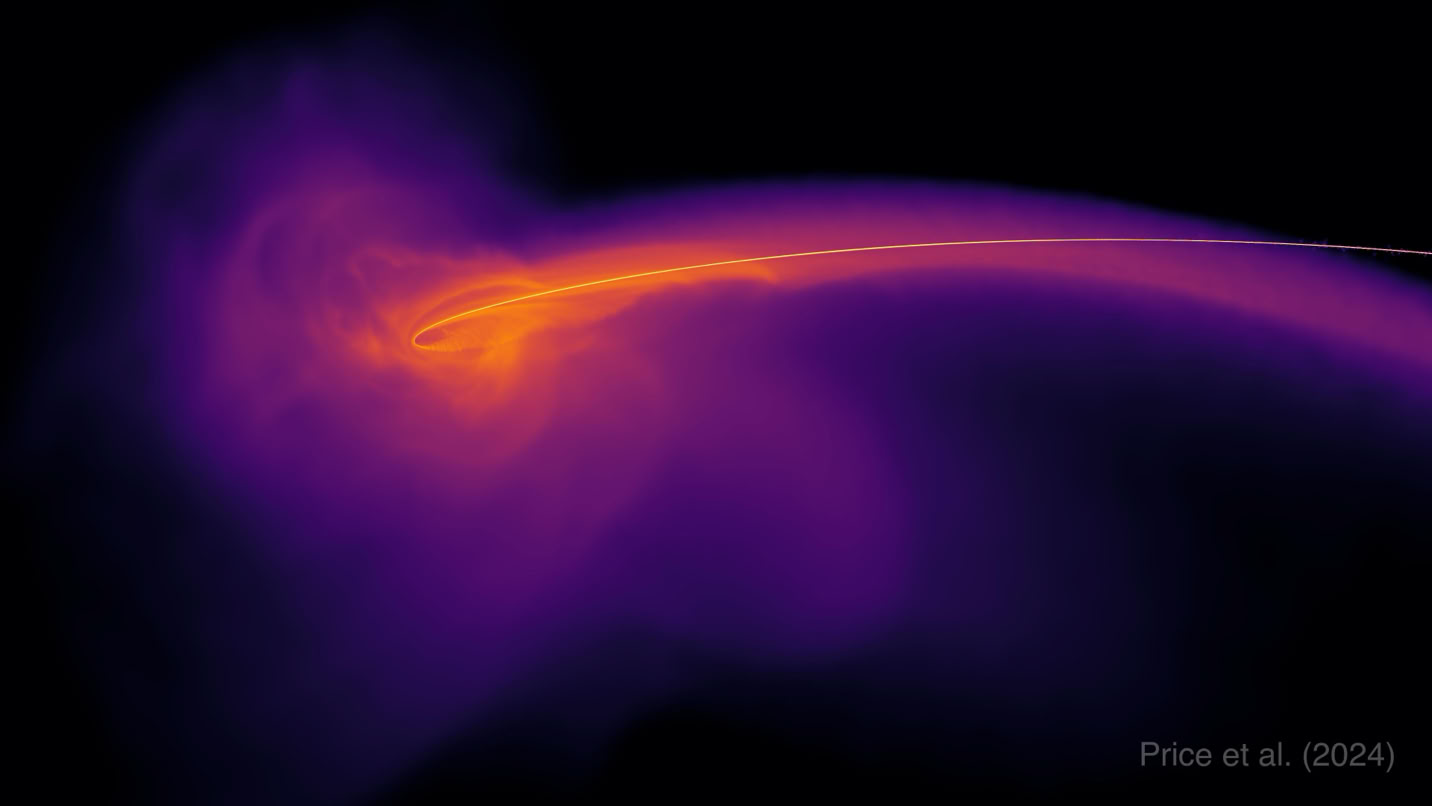by Florin-Ioan Constantin, Ph.D. student
Simulation of a TDE, Source: Price et al. (2024) https://iopscience.iop.org/article/10.3847/2041-8213/ad6862
This week, a team of researchers published a study about one of the brightest events ever recorded.
In 2018, a flare was observed originating from a supermassive black hole located at the center of a galaxy 11 billion light-years away. The event was the brightest of this type ever recorded, with an intensity 10 trillion times greater than that of the Sun at its peak. After this spectacular maximum, the flare remained visible even as it "faded" over the course of 6 years of subsequent observations. Calculations show that the energy emitted...
In the article published in the journalNature, the research team proposes several theories about the source of the event, highlighting the one considered to be the most probable, namely that the black hole "tore apart" a star at least 30 times larger than our Sun located in the accretion disk of the black hole and which approached it too closely, in an event called a ‘tidal disruption event’.
The researchers also say that there are indications that such events could happen more often in the future, allowing them to learn more about the mechanisms that drive the accretion processes of supermassive black holes in the center of galaxies.
References:
https://www.nature.com/articles/s41550-025-02699-0#Sec5
https://www.nature.com/articles/d41586-025-03597-1
